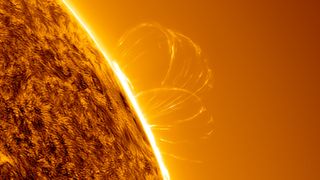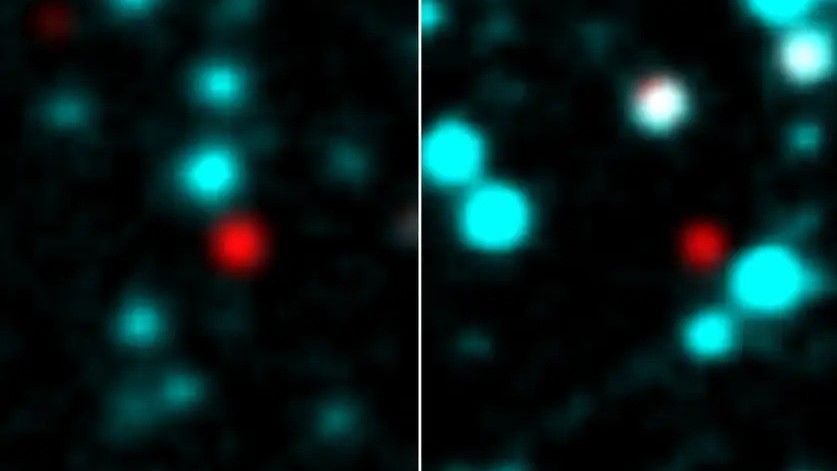Shining loops of plasma on the surface of the sun “flicker” hours before they unleash potentially dangerous solar flares, a new study shows. The new findings could help create more reliable space weather forecasts, researchers say.
Solar flares are violent outbursts of electromagnetic radiation that shoot from the sun when invisible magnetic field lines at the sun’s surface get twisted up until they eventually snap. These outbursts most commonly occur around sunspots — dark patches where magnetic field lines poke through our home star’s surface — and often pull up plasma from the sun’s surface into shimmering horseshoe shapes, known as coronal loops, before they blow their top.
These stellar explosions can send waves of radiation toward Earth that trigger temporary radio blackouts. The flares can also unleash fast-moving clouds of magnetized plasma, known as coronal mass ejections (CMEs), that occasionally slam into our planet and cause geomagnetic storms — such as in May 2024, when we experienced the most powerful geomagnetic storm for 21 years, which painted widespread auroras across the globe.
In the new study, published Dec. 6, 2024 in the Astrophysical Journal Letters and presented Jan. 15 at the 245th meeting of the American Astronomical Society in Maryland, researchers analyzed multi-wavelength images of coronal loops preceding 50 solar flares, filmed by NASA’s Solar Dynamics Observatory (SDO). This revealed that the loops emitted small flashes of invisible ultraviolet light at specific wavelengths shortly before the flares were unleashed.
“The results are really important for understanding flares and may improve our ability to predict dangerous space weather,” study co-author Emily Mason, a researcher at Predictive Science Inc. in San Diego, said in a statement.
Related: X-class solar flares hit a new record in 2024 and could spike further this year — but the sun isn’t entirely to blame, experts say
The researchers noted that this flickering could “signal oncoming flares two to six hours ahead of time with 60 to 80 percent accuracy,” which is a significant improvement over current methods. The intensity of the flickering also correlates with the power of the incoming flares, they added.
“However, the [study] team says more observations are needed to confirm this link,” NASA representatives wrote in the statement.
Currently, the sun is spitting out solar flares like there’s no tomorrow thanks to the ongoing solar maximum — the peak in the sun’s roughly 11-year cycle of activity — so there will be no shortage of data for follow-up studies.
Predicting space weather
Forecasting solar activity is extremely challenging, and scientists can still get predictions wrong. For example, the ongoing solar maximum arrived earlier and has been more active than scientists initially expected.
This uncertainty can cause issues when surprise solar storms catch us out. For example, satellite operators lost multiple spacecraft in recent months after they were knocked out of low-Earth orbit by unforeseen fluctuations in Earth’s atmosphere caused by solar storms.

On our planet’s surface, GPS systems, such as those used in most tractors across the U.S., also experienced malfunctions during the biggest geomagnetic disturbances last year. Electric currents generated by these storms can also damage ground-based infrastructure, such as rail lines and power grids.
Related: 10 supercharged solar storms that blew us away in 2024
Being able to more accurately predict space weather would also give aurora chasers a better chance of seeing the northern lights.
But most of the current methods of forecasting space weather, such as measuring magnetic field strength and analyzing sunspots, do not give accurate estimates for when specific flares will occur.
“A lot of the predictive schemes that have been developed are still predicting the likelihood of flares in a given time period and not necessarily exact timing,” study co-author Seth Garland, a researcher at the Air Force Institute of Technology in Ohio, said in the statement.
However, the new method of predicting solar flares could provide more advanced warning by taking into account the individuality of each potential solar outburst.
“Each solar flare is like a snowflake — every single flare is unique,” study lead author Kara Kniezewski, a graduate student at the Air Force Institute of Technology, said in the statement.
















